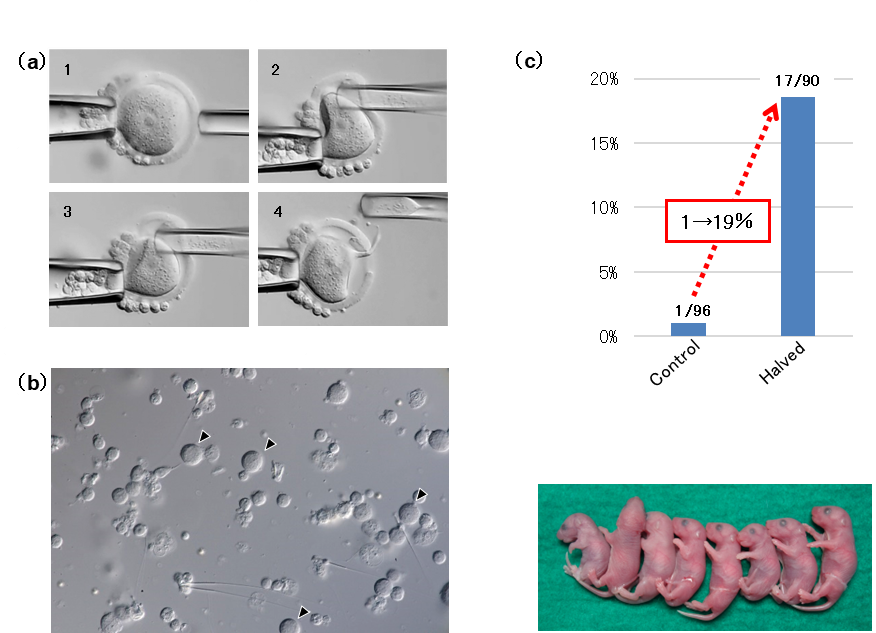 |
BRC Current Technology March 2024 |
20. Fertilization using spermatocytes
|
| The primary spermatocyte nucleus can support full term development following injection into immature oocytes, but the birth rates are extremely low (around 4%) [1]. At least one of the causes of this low efficiency is chromosome segregation errors during bi-parental meiosis within oocytes. Recently, it was reported that oocyte meiotic divisions are inherently error-prone caused by the large oocyte size [2]. Then we used the ‘’down-sized oocytes’’ (Fig. a) which increased the precise chromosome segregation for injection with primary spermatocytes (b arrowhead). As a result, we obtained about 20-fold higher (19% vs. 1%) birth rate (c) [3]. We applied this improved spermatocyte injection method to mouse strains with azoospermia caused by spermatogenic arrest at the primary spermatocyte stage. Of the three mutant strains tested, two strains produced offspring following spermatocyte injection. Thus, injection of primary spermatocytes into oocytes can be a potential treatment for overcoming at least a part of human nonobstructive azoospermia due to meiotic failure. | |
| References: | [1] | Ogura, A et al. Development of normal mice from metaphase I oocytes fertilized with primary spermatocytes. PNAS 95, 5611 (1998) |
| [2] | Kyogoku, H and Kitajima, T. Large cytoplasm is linked to the error-prone nature of oocyte. Dev Cell 41, 287 (2017) |
|
| [3] | Ogonuki, N et al. Birth of mice from meiotically arrested spermatocytes following biparental meiosis in halved oocytes. EMBO Reports e54992 (2022) |





